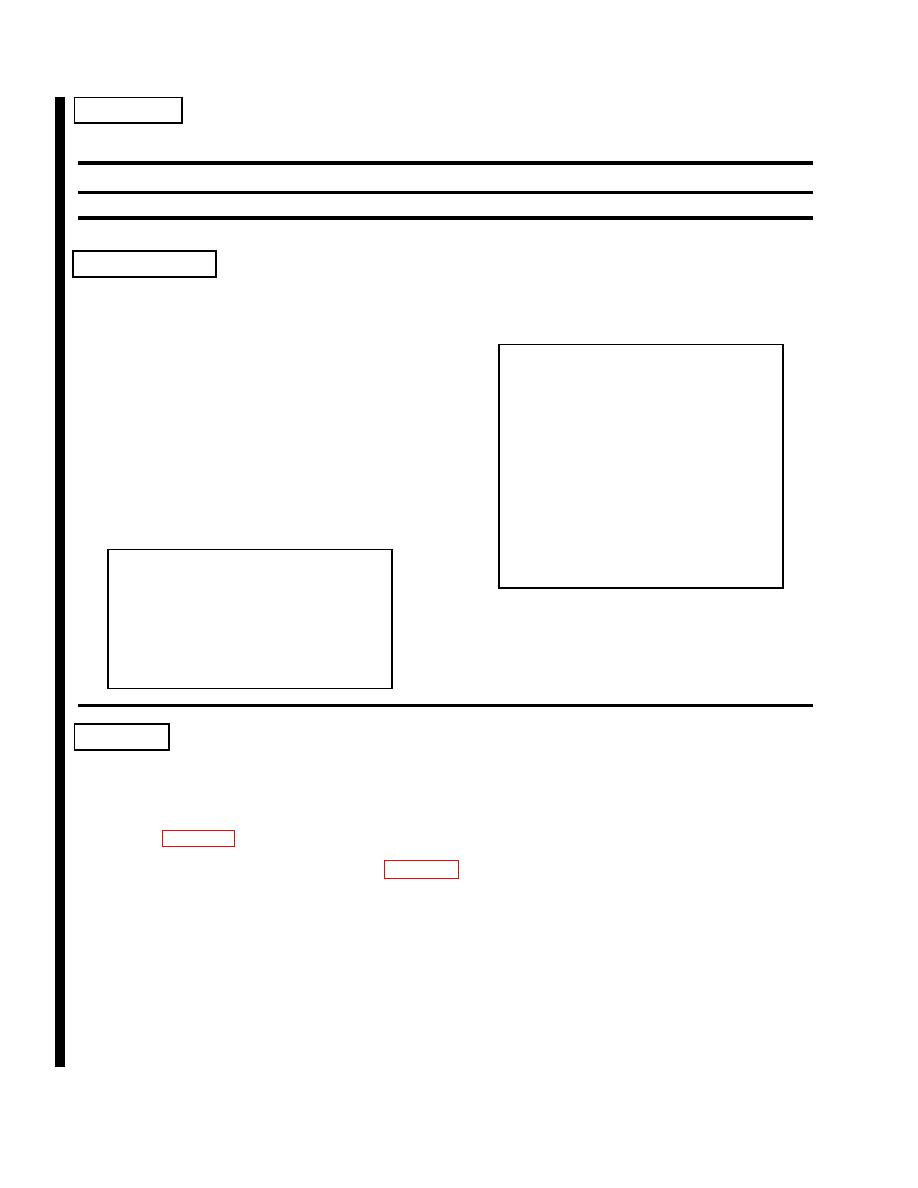 |
|||
|
|
|||
|
|
|||
| ||||||||||
|
|
 TM 5-2420-224-34
OVERVIEW
This section illustrates and describes procedures for testing the engine assembly.
ENGINE TESTING
This task covers:
a. Testing
INITIAL SETUP
Tools and Special Equipment:
General Safety Instructions (Cont):
Shop Equipment, SC 4910-95-CL-A31
WARNING
Tool Kit, SC 5180-90-CL-N26
Dynamometer
Fuel vapors are toxic. Avoid
prolonged
exposure
or
References:
breathing of fumes. Work in
AR 750-22
well-ventilated area. Failure
LO 5-2420-224-12
to do so could result in injury
TM 5-2420-224-10
to personnel.
TM 5-2420-224-20
Fuel and oil are slippery and
General Safety Instructions:
can cause falls. To avoid
injury, wipe up spilled fuel or
WARNING
oil with rags.
Diesel fuel is flammable. Do
not perform this procedure
near fire, flame, or sparks.
Injury or death to personnel
could result.
TESTING
1.
Install engine on dynamometer and check engine oil level on dipstick. Add oil as required per LO 5-
2420-224-12.
2.
Prior to starting engine, adjust valve clearance per TM 5-2420-224-20 and adjust fuel injection pump
timing (page 3-50). Refer to TM 5-2420-224-10 for engine specifications.
3.
Prime fuel system per TM 5-224-2420-10, Chapter 3, para 3-5, steps b thru h.
4.
Start engine and check for ease of starting.
5.
Run engine at low idle (700-750 rpm) for 5 minutes. Adjust idle speed as required by turning adjusting
screw on end of governor. Accelerate engine and check governed speed (2800 rpm). Check all gages
for proper operation; inspect for leaks. Reduce engine speed to idle.
6.
Increase engine speed to 1700 rpm and run for 5 minutes. Output torque should indicate 232 lb-ft
(314 N.m).
7.
Increase engine speed to 2800 rpm and run for 5 minutes. Output horsepower should indicate 110 hp
(81 kW).
|
|
Privacy Statement - Press Release - Copyright Information. - Contact Us |